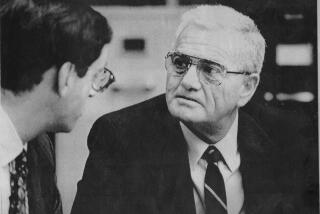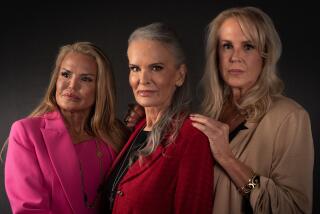Powerful Photos Can Humanize the Killings
- Share via
The humanity of the dead, one of them a young mother of two, has been ignored in the O.J. Simpson trial during the past few weeks while attorneys and scientists have clashed over DNA.
Many times, a stranger walking into the courtroom would not have known that the attorneys and witnesses were talking about people. The evidence was labeled with numbers and scientific names, as if they were unrelated to anyone involved in the Simpson drama.
The prosecution is trying to change this, knowing that the jurors must be reminded of the victims. Prosecutors have asked Judge Lance A. Ito for permission to show the jury a number of pictures taken of Nicole Brown Simpson and Ronald Goldman during their autopsies. Ito is considering the request.
From Deputy Dist. Atty. Brian Kelberg’s descriptions, the photographs, taken while the victims were on morgue examining tables, are powerful.
One of Nicole Simpson shows how the killer slashed her neck from left to right, severing major veins and arteries. The gaping wound, the attorney indicated, is sickeningly visible. The Goldman pictures show multiple fatal stab wounds in his chest and neck.
Arguing for displaying the photographs, Kelberg said, “A defendant has no right to transform the facts of a gruesome real-life murder into an anesthetized exercise where only the defendant, not the victim, is human.”
*
The debate over the photographs reminded me of the impact of pictures during the Vietnam War--during which powerful photographs and television images brought the human cost into American homes, helping crystallize opposition to the conflict.
I called a noted military historian and analyst, Col. Harry G. Summers, and asked him what he thought of the comparison. He agreed with it.
“In the O.J. Simpson trial, the people in fact were murdered and to try to hide that takes away all the meaning of the trial,” Summers said. “Hiding that from the jury is like hiding a war from the people.”
He noted that in World War II, the media were forbidden by the government to show pictures of the dead. But this restriction did not apply with Vietnam.
Summers recalled some of the pictures that influenced public opinion during this period: Morley Safer’s 1965 report of Marines setting fire to thatched roofs while burning the village of Cam Re; a little girl running from napalm; Americans assaulting “Hamburger Hill,” a ridge infamous for high casualties.
These were the most famous, but there were many others, day after day: Medics carrying dead and wounded American troops to a helicopter; dead and wounded soldiers awaiting evacuation; two American soldiers badly burned by napalm from their side.
As graphic as the coverage was, it did not turn public opinion against the war, Summers said. Still, the pictures weakened public support.
“I think the media by and large follows, rather than leads, public opinion,” he said. “When the public turned against the war, the media turned against it. Once the American people saw that the objective had diminished from victory, then the cost became exorbitant, and that was when pictures mattered. Hamburger Hill mattered the most.”
Or as historian Daniel C. Hallin wrote in his book, “The Uncensored War, the Media and Vietnam”: “After the controversy over Hamburger Hill, orders went out from the White House to limit American casualties.”
The impact of the Vietnam pictures and stories prompted the British government to impose tight controls on news coverage during the Falklands War. And according to many journalists, it was the reason the American government restricted Gulf War news coverage.
*
Just as governments feared the effects of unfavorable images during the Falkland and Gulf wars, the defense wants to avoid the impact of the autopsy photos on the jurors.
“Adding the autopsy photographs can only do one thing, and that’s infuriate and inflame the passion of the jury,” said defense attorney Robert L. Shapiro.
But to the prosecutors, the photographs are essential and dramatic evidence that the murders were committed by Simpson.
“These photographs do show that at last a jury can find that these were rage-motivated killings,” Kelberg said. “The jury will then want to think who has that motivation. Who could generate that rage toward one or the other or both of these individuals?”
The argument Friday took place after the jury had left the courtroom. But the intensity of Kelberg’s words, and of Shapiro’s response, showed that the case before the jurors will soon move from the dryness of scientific evidence back to the emotion of a double murder.
More to Read
Sign up for Essential California
The most important California stories and recommendations in your inbox every morning.
You may occasionally receive promotional content from the Los Angeles Times.










